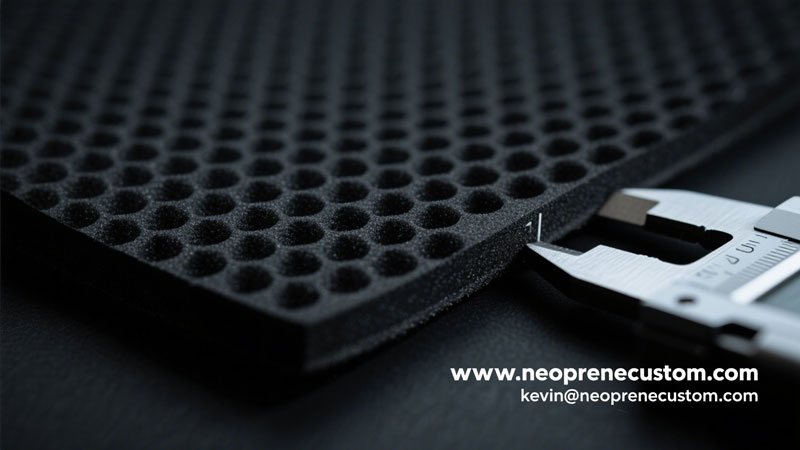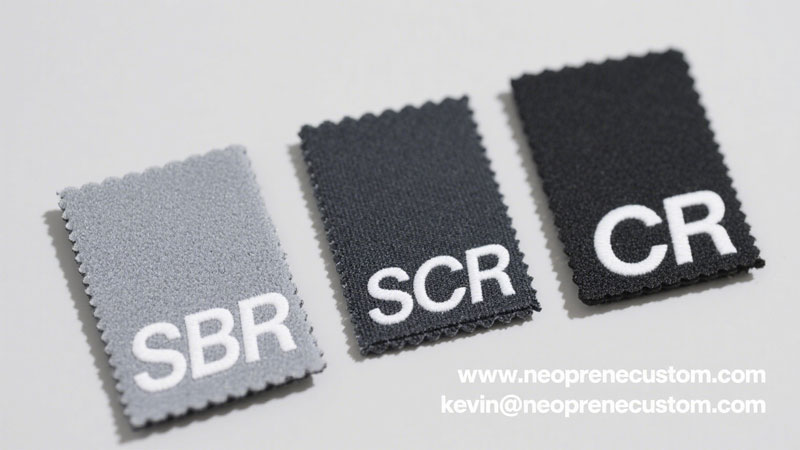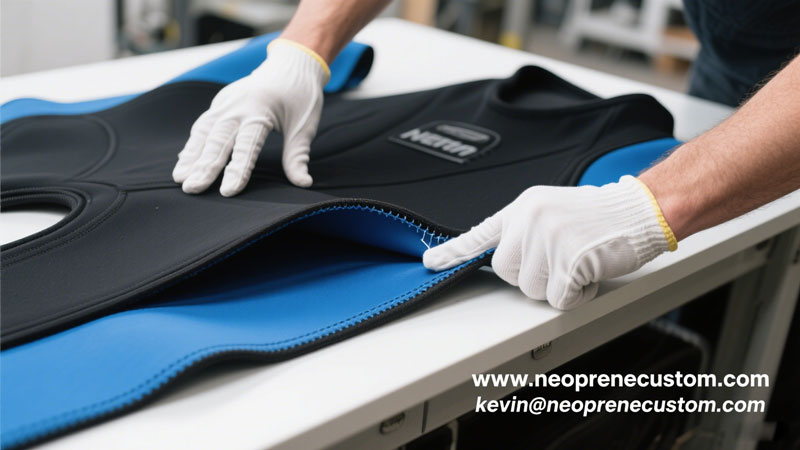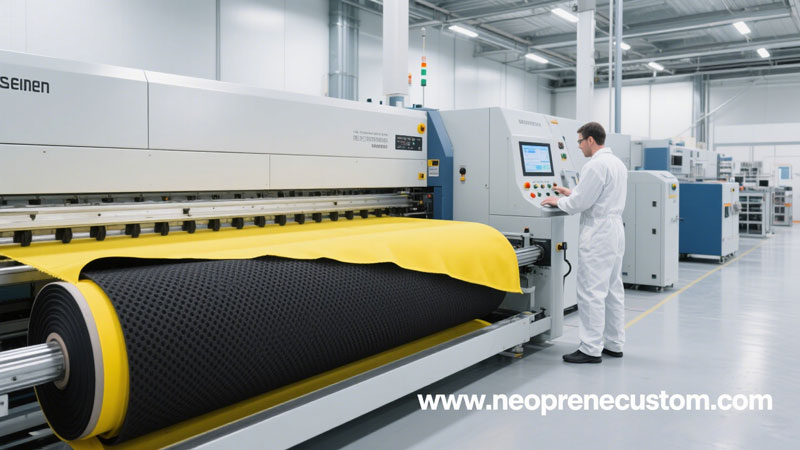Are You Truly Confident in Your Neoprene Foam's Quality? A Deep Dive into SBR, CR, and SCR Testing
Have you ever invested in a product, only to find it fails you when you need it most? Whether it’s a wetsuit that loses its insulation, a laptop sleeve that offers poor protection, or an industrial seal that degrades prematurely, the culprit is often a material that didn't live up to its promise. In the world of high-performance materials, could there be a more versatile yet misunderstood hero than neoprene foam?
But here's the critical question: how can you be certain that the neoprene foam you're sourcing meets the rigorous standards your application demands? Is there a reliable way to look at a sheet of black foam and truly understand its hidden properties? The truth is, not all neoprene is created equal. The difference between a robust, long-lasting product and a disappointing failure lies in the very chemistry of the foam—specifically, whether it's SBR, CR, or SCR, and how its quality is verified.
Isn't it time to move beyond guesswork and empower yourself with the knowledge to discern true quality? This guide is not just a list of technical specifications; it’s your key to unlocking the secrets of neoprene quality testing. We will walk you through the essential indicators, demystify the acronyms, and ultimately reveal why partnering with a specialized manufacturer is the most crucial decision you'll make.
Deconstructing the Core: What Really Defines Neoprene Quality?
Before we dive into specific tests, shouldn't we first understand what we're looking for? Quality in neoprene isn't just about how it feels to the touch. It’s a complex interplay of chemical composition, cellular structure, and physical properties.
The Polymer Base (The DNA): At its heart, the quality of neoprene is determined by its primary polymer. Is it 100% Chloroprene Rubber (CR), known for its superior resistance to oil, ozone, and heat? Or is it Styrene-Butadiene Rubber (SBR), a more economical alternative with good abrasion resistance but less environmental resilience? Or perhaps it's a blend, SCR, attempting to offer the best of both worlds? Don't you think the very foundation of the material should be your first point of inquiry?
Cellular Structure (The Architecture): Is the foam composed of closed cells or open cells? For applications requiring waterproofing and thermal insulation, like wetsuits or can coolers, a closed-cell structure is non-negotiable. It traps nitrogen gas, creating buoyancy and a thermal barrier. An inconsistent cell structure, with large voids or uneven distribution, is a clear sign of poor manufacturing. How can you ensure this microscopic integrity without the right expertise?
Density and Hardness (The Strength): The density of the foam directly impacts its durability, weight, and compression resistance. A higher-density foam will be more robust and resistant to being crushed, but also heavier. The hardness, measured in shores, determines its feel and flexibility. Wouldn't you agree that a "one-size-fits-all" approach to density and hardness simply cannot work for specialized applications?

The Great Showdown: Unmasking SBR, CR, and SCR
Understanding these three types is fundamental. Let's not just define them; let's explore how their unique compositions dictate the tests you need to perform.
SBR (Styrene-Butadiene Rubber): The Economical Workhorse
Have you encountered neoprene that feels a bit stiff or has a distinct rubbery odor? You might be dealing with SBR. As a synthetic rubber, SBR offers fantastic value and good physical properties like abrasion resistance and impact strength. But how do you verify its quality for applications like mouse pads, general padding, or promotional items?
Key Quality Indicators for SBR:
Compression Set Test: Does it bounce back? Press your thumb firmly into the foam for 30 seconds. A high-quality SBR will recover its shape almost immediately. A poor-quality one will retain a noticeable indentation, indicating it will "pack out" and lose its cushioning over time.
Abrasion Resistance: While harder to test without lab equipment, a simple scrape test against a rough, standardized surface can be revealing. Does it shed particles or tear easily?
Odor Test: A very strong, persistent chemical smell can indicate the use of low-grade raw materials or residual curing agents. Shouldn't your material be as refined as your final product?
Color Consistency: In its raw form, is the black color uniform? Streaks or swirls can suggest an improper mixing of raw materials during production.
CR (Chloroprene Rubber): The Premium Performer
When performance is paramount, is there any substitute for genuine CR? This is the material that gave neoprene its legendary reputation. Used in high-end wetsuits, medical braces, and demanding industrial gaskets, CR boasts exceptional resistance to oil, chemicals, UV rays, and oxidation. But how do you confirm you're getting the real deal and not a cheaper blend?
Key Quality Indicators for CR:
Elongation and Tensile Strength Test: A defining feature of CR is its superior stretch and strength. A good CR sheet can be stretched to many times its original length before breaking (high elongation) and requires significant force to do so (high tensile strength). Does the material feel "lively" and strong when you pull it, or does it feel brittle and weak?
Oil Soak Test: Cut a small sample and submerge it in motor oil or another common solvent for 24 hours. A genuine CR will show minimal swelling, discoloration, or degradation. In contrast, SBR would likely swell up, become soft, and lose its structural integrity. Isn't this a definitive test for demanding applications?
Flame Resistance Test (Use Extreme Caution): Briefly expose a tiny sliver of the material to a flame and then remove it. True CR is self-extinguishing. It will burn when in the flame but will stop burning almost immediately upon removal. SBR, on the other hand, will continue to burn. This is a critical safety feature.
Weathering/UV Resistance: While a long-term test, leaving a sample in direct sunlight for several weeks can be telling. High-quality CR will show minimal cracking or hardening, while lower-grade materials will become brittle.
SCR: The Hybrid Blend
What if you need a balance of performance and cost? This is where SCR, a blend of SBR and CR, enters the picture. It's a common choice for mid-range consumer goods. The challenge, however, is the blend ratio. A 50/50 blend will behave very differently from an 80/20 blend. How can a buyer be sure of the composition?
Key Quality Indicators for SCR:
The "Middle Ground" Performance: The key here is consistency. An SCR foam should perform noticeably better than SBR in stretch and recovery tests, but it won't match the premium feel or the oil/flame resistance of 100% CR. Does its performance align with the price point and the supplier's claims?
The Supplier's Honesty: The most critical test for SCR is not on the foam itself, but on the supplier. Are they transparent about the blend ratio? Can they provide a technical data sheet (TDS) that specifies the properties? A trustworthy manufacturer will have no issue providing this information.

Your Ultimate Neoprene Quality Testing Checklist: From a Manufacturer's Perspective
So, you have a sample in your hands. What now? Let's consolidate this knowledge into a practical, step-by-step process.
The Visual Inspection: Lay the sheet flat under good lighting. Are you seeing any pinholes, bubbles, or surface imperfections? Are the laminated fabrics (like nylon or polyester) bonded perfectly without any bubbling or peeling at the edges?
The Tactile Test (Feel & Elasticity): How does it feel? Is it smooth and supple, or rough and stiff? Perform the stretch test. Pull it in all four directions. Does it stretch evenly? More importantly, does it snap back to its original form instantly? This is a primary indicator of a quality polymer base and cell structure.
The Density & Consistency Check: Is the sheet uniform in thickness from edge to edge? Use calipers for an accurate measurement. A variance of more than a few percentage points signals poor quality control during the foaming process.
The Compression Test: As mentioned, the thumb test is a great field indicator. For a more rigorous approach, place a heavy, flat object on a sample for an hour. The degree of permanent indentation reveals its compression set resistance.
The Tear Strength Test: Try to tear a small off-cut. Does it resist tearing initially and then tear cleanly, or does it crumble and rip with little effort? High-quality neoprene, especially CR, possesses excellent tear strength.
The Water Absorption Test: For closed-cell foam, cut a small piece and weigh it. Submerge it in water for 24 hours, pat the surface dry, and weigh it again. A negligible weight gain confirms a proper closed-cell structure, vital for any waterproof or flotation application.

Why Settle for Off-the-Shelf When You Can Mandate Perfection?
After reviewing all these tests, doesn't one thing become crystal clear? Relying on random batches of pre-made neoprene foam is a game of chance. You're hoping the material meets your needs, but you can't be certain. The color might be right, but is the density? The thickness might be correct, but is it genuine CR or a cheaper SBR?
So, how do you eliminate this uncertainty and guarantee that every single sheet of material is perfectly aligned with your product's requirements?
The answer is simple: you don't just buy neoprene; you specify it. This is where a dedicated manufacturing partner becomes invaluable. Instead of testing what you're given, you dictate the quality from the very beginning.
Imagine having the power to define:
The Exact Polymer: "I need 100% CR for its chemical resistance."
The Precise Density: "My application requires a high-density foam (e.g., 180 kg/m ³) for maximum impact protection."
The Specific Hardness: "We need a softer foam (e.g., Shore C 10-12) for a comfortable medical brace."
The Custom Thickness: "Our design calls for an unconventional 4.5mm thickness."
The Perfect Lamination: "We need it laminated with a 4-way stretch nylon on one side and a durable polyester on the other."
But who can you trust to bring this level of intricate customization to life?

At Neoprene Custom, we are not just suppliers; we are your dedicated manufacturing partners. We live and breathe neoprene foam. Our entire process is built around collaboration and customization. We understand that the SBR for a mouse pad is fundamentally different from the CR needed for a deep-sea diving suit. We work with you to understand your project's soul and then manufacture the exact material to match. Our quality control isn't just a final step; it's embedded in every stage, from raw polymer selection to the final lamination.
Are you ready to stop guessing and start creating with confidence? Are you prepared to source a material that is not just adequate, but perfectly engineered for your success?
Your project deserves more than an off-the-shelf solution. It deserves precision. It deserves quality. It deserves a partner who understands your vision.
Take the next step. Visit our website at https://neoprenecustom.com to see the vast possibilities of custom neoprene. For a direct consultation and to discuss the specific technical requirements of your project, send your inquiry to our specialist, Kevin, at kevin@neoprenecustom.com. Let's build something exceptional together.
Contact: Kevin
Phone: 13417385320
Tel: 0734-87965514
Email: kevin@neoprenecustom.com
Add: Intersection of Zhangjialing Road and Science and Technology Road, Guiyang Industrial Park, Guiyang Town, Qidong County, Hengyang City, Hunan Province./Dongguan Factory(Louvcraft): Building 3, No.363 Dongxing West Road Dongkeng, Dongguan.